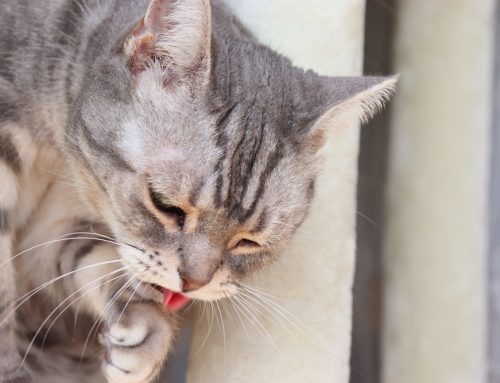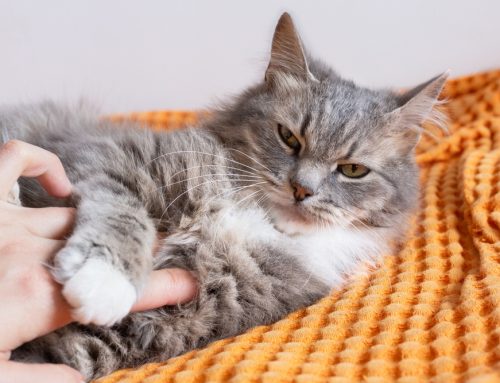Biggest Threat to Pandas – Roundworms
Twenty years ago, the leading cause of death in giant pandas was starvation caused by habitat destruction. However, a new threat has reared it’s ugly, three-lipped head – Baylisascaris schroederi, the giant panda roundworm. A recent study has shown that half of all panda deaths in the wild between 2001 and 2005 were caused by this roundworm.
How does a tiny roundworm kill a giant panda bear? Part of the answer is “numbers.” Overwhelming numbers of these worms, which can be as thick as spaghetti, can cause bowel obstructions. And these worms are very fecund (they lay tons of eggs). Because these eggs have thick walls, they live in the environment for a long time (several months to years in the right environment).
The other part of the answer lies in the life cycle of the roundworm, because it is not as simple as you might expect. Let’s start with adult roundworms in the intestine of a panda, which lays eggs. These eggs pass out of the panda with the feces, and mature in the environment over 3-4 weeks, and which point these sticky eggs are picked up and eaten (along with food, or as part of grooming). You’d think that these eggs would then become roundworms in the intestinal tract, right? That is way too easy…
Once the eggs reach the stomach, they hatch, and the larval worms burrow through the wall of the stomach, into the liver, then through the diaphragm into the lungs. Then they are coughed up and swallowed, and infest the intestinal tract as a roundworm. This larval migration can be very damaging, especially if it is done by thousands of worms – infection or scar tissue formation in the liver and lungs is very serious.
Why should you care? Because the roundworms we see in our pet dogs and cats follow the exact same life cycle. People, too (mainly toddlers) can pick up these sticky roundworm eggs (every toddler’s hand ends up in her mouth at some point). When people ingest canine roundworm eggs, the larval migration pattern can vary, and sometimes they end up encysted in the eye or brain. This is a very serious public health consideration, and one reason why we recommend monthly de-worming and annual checks!
There is some good news – monthly heartworm preventatives kill roundworms, and dead worms don’t lay eggs. The other bit of good news is that Australian researchers have recently mapped the genome of the canine roundworm (Toxocara canis), and this may lead to further advances in prevention for dogs (and maybe pandas, too).
|
Top Household Toxins
March is Pet Poison Prevention month! Understanding which items in your house are potentially toxic to your pets gets you way ahead of the game (and hopefully prevents some late-night ER visits, or worse…)
Here are some of the top household toxins. If your pet is exposed, or you ever have a question, please call us!
| Dogs |
Cats |
| Xylitol – this sweetener doesn’t cause an insulin release in people, but it causes a massive release in dogs, driving blood sugar levels straight down and potentially causing seizures, coma or death. Many “sugar-free” substances (like chewing gum) contain xylitol. |
Lilies – all parts of the lily plant are toxic, including the pollen that gets everywhere! Exposure to a very small amount of the plant will cause kidney failure in cats. If you have cats, we don’t recommend bringing lilies into your house. |
| Mice and Rat bait – some toxins take days to show signs, some take hours |
Spot-on insecticides – Cats are not small dogs! Using flea and tick products meant for dogs will lead to tremors (or worse) |
| Medications – (mainly heart meds, cold medications, antidepressants) – all human prescriptions should be considered poisonous |
Tylenol (acetaminophen) – cats cannot break down acetaminophen, and can cause fatal changes in the oxygen-carrying system |
| Chocolate – rarely truly poisonous, but can cause high heart rates and arrythmias – the darker the chocolate, the more dangerous |
Medications (antidepressants, NSAIDs, ADD/ADHD meds) – all human prescriptions should be considered poisonous |
Just as true today as 200 years ago –
“An ounce of prevention is worth a pound of cure” – Benjamin Franklin
|
Spring Break!
If you are headed out of town this spring break, please don’t forget the family pet! We are happy to care for your furry family members while you are gone, but space is now very limited. Please call right away if you would like to board your pet/s with us!
If you are taking your pet with you, good for them (and for you)!
If you are traveling with pets:
- Take plenty of (pet) food with you.
- Have water bowls and water easily accessible.
- Check your route for emergency hospitals, just in case.
- If your pet has a chronic condition (such as kidney disease or is on heart medication), or if your pet has been sick recently, make sure you take a detailed copy of your medical records. We’ll be happy to help!
- If you are flying with your pet, make sure you contact your airline and have everything you need (paperwork-wise).
|








Leave A Comment